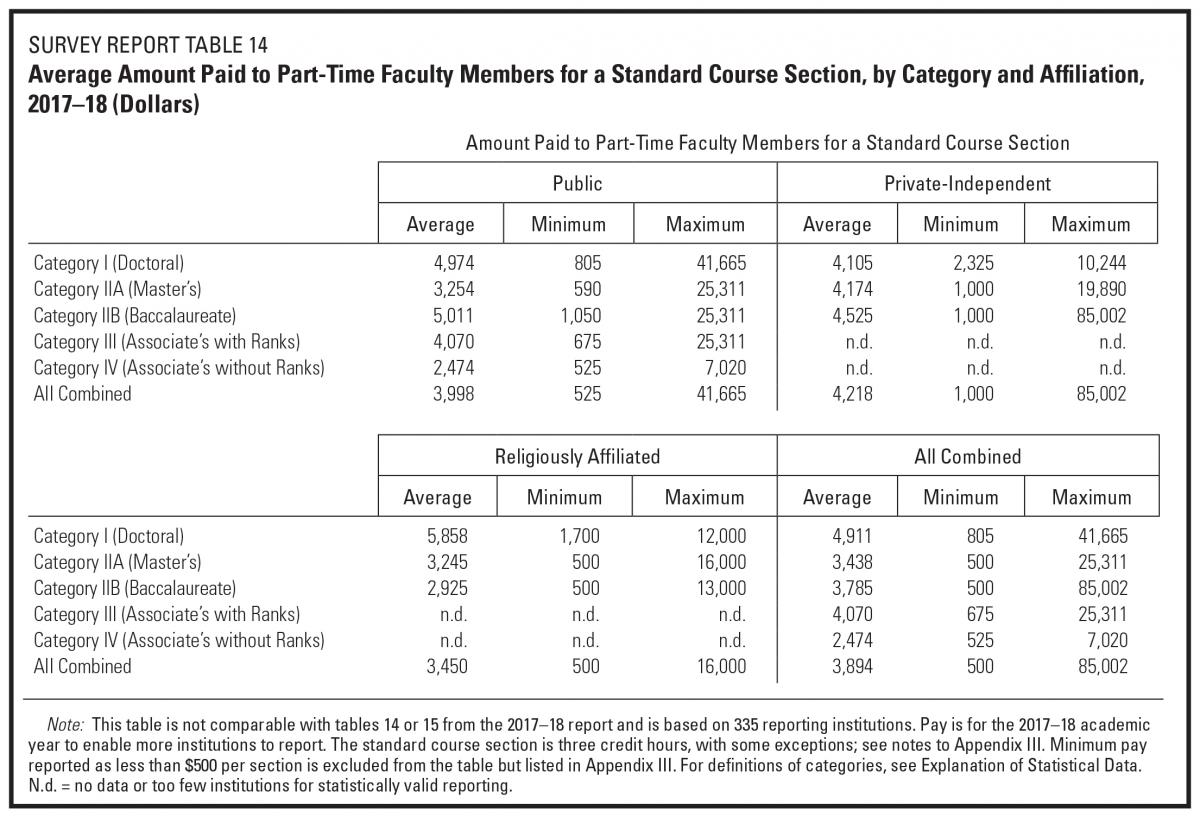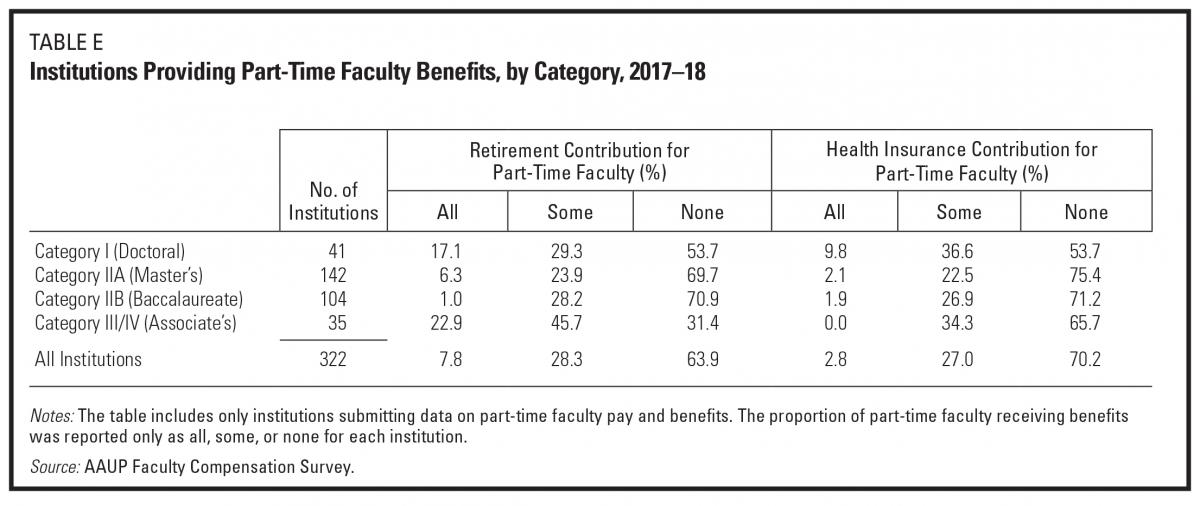- About
- Programs
- Issues
- Academic Freedom
- Political Attacks on Higher Education
- Resources on Collective Bargaining
- Shared Governance
- Campus Protests
- Faculty Compensation
- Racial Justice
- Diversity in Higher Ed
- Financial Crisis
- Privatization and OPMs
- Contingent Faculty Positions
- Tenure
- Workplace Issues
- Gender and Sexuality in Higher Ed
- Targeted Harassment
- Intellectual Property & Copyright
- Civility
- The Family and Medical Leave Act
- Pregnancy in the Academy
- Publications
- Data
- News
- Membership
- Chapters
Data Snapshot: New AAUP Data on Part-Time Faculty Pay and Benefits
A closer look at the least secure and worst remunerated teaching positions in higher education.
Part-time faculty members make up approximately 40 percent of the total instructional faculty workforce, according to data compiled by the AAUP in 2018. But although these faculty members significantly outnumber their tenured and tenure-track colleagues (who together now make up less than a third of the instructional workforce), data on the pay and benefits they receive are scarce. Since 2015–16, the AAUP has sought to bring greater transparency to part-time faculty pay through its annual Faculty Compensation Survey, and this year the survey included questions about per-course-section pay for the first time. More than 360 colleges and universities provided at least partial data on pay and benefits for more than 64,000 part-time faculty members, making the Faculty Compensation Survey the largest source for these data at present.
The new data are summarized in survey report table 14 of the Annual Report on the Economic Status of the Profession, 2018–19, reproduced below. (The 2018–19 survey requested data from the 2017–18 academic year to enable more institutions to respond.) Across all responding institutions, the average pay for a part-time faculty member teaching a three-credit course was $3,894. The lowest average rates of pay were reported by religiously affiliated private baccalaureate colleges, at $2,925, while religiously affiliated doctoral universities paid the highest rates, $5,858 on average.

This year’s survey also asked responding institutions whether they made a contribution to retirement plans or health insurance for part-time faculty members and what proportion of part-time faculty members were covered—all, some, or none. The results are presented below in table E from the annual report. Provision of retirement benefits is most frequent at community colleges, although the number of colleges providing data is small. The majority of other responding institutions do not make a retirement contribution for any part-time faculty members. The widespread lack of such benefits, together with low rates of pay, means that many part-time faculty members face bleak prospects for a financially secure retirement.

An institutional contribution toward health insurance is even less common than a retirement contribution among institutions responding to the survey, with 70 percent not making any contribution. Nearly half of doctoral universities make at least some health insurance contribution, but only a few completed this survey item. (The survey did not ask whether part-time faculty members could buy in to an institutional health plan without an employer contribution.)
This year the AAUP also published a new institution-specific appendix III, available at https://www.aaup.org/ares, that lists minimum, maximum, and average pay rates per course section for part-time faculty members. Collecting these data is challenging, and the figures presented in the appendix undoubtedly include errors, despite the survey’s rigorous procedures for validating data submitted by institutions. Both survey report table 14 and appendix III show a wide range between minimum and maximum pay rates.
The publication of appendix III represents an important step forward in efforts to shed light on part-time faculty pay and benefits. For decades, the AAUP has been advocating for improvements in the working conditions, economic security, and academic freedom of faculty members on part-time and other contingent appointments. Our intention in producing institution-specific data is to make part-time faculty pay more transparent. We hope that the publication of these data will spur renewed advocacy for the majority of faculty members working on contingent appointments.
This data snapshot was adapted from the AAUP’s Annual Report on the Economic Status of the Profession, 2018–19.
John W. Curtis served as consultant for the AAUP’s 2018–19 Faculty Compensation Survey.



